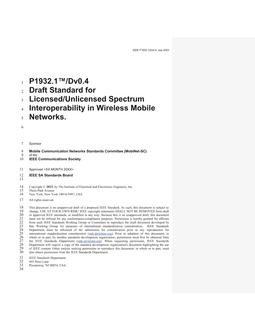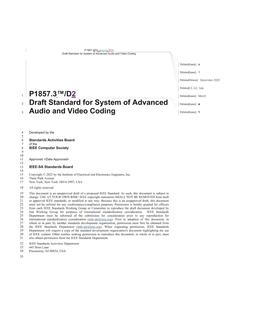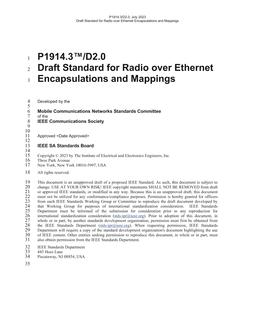
IEEE P1932.1
Click here to purchase
New IEEE Standard – Active – Draft.The proliferation of connected users and downloaded applications has driven the development of a new paradigm in wireless mobile networks. This paradigm utilizes additional air interfaces operating in the unlicensed spectrum to serve as supplementary downlinks (SDL) and enhance end-user throughput. However, integrating these interfaces into licensed base stations can be challenging, as they are distributed across various domains. Wi-Fi is a key technology for increasing capacity through the user plane interface. Traffic is buffered in Wi-Fi when unlicensed channels become unavailable, and transmissions resume once new radio slots are free. To meet the strict round-time delay requirements of 5G, this standard defines a new virtual controller that resides at the mobile edge-cloud. The controller coordinates the multi-connectivity model and traffic sharing between licensed and unlicensed interfaces based on the real-time availability of unlicensed channels for a specific user equipment.This standard presents two schemes for managing multi-connectivity modes: Distributed and Centralized. In the Distributed scheme, the controller manages traffic forwarding and steering between distributed radio interfaces across domain sites. In the Centralized scheme, various radio interfaces are colocated in the same base station, and the controller manages traffic steering through a new unified 5G MAC design. The controller ensures traffic sharing between different interfaces, given that operators provide access to operator-deployed Wi-Fis or any other customer Wi-Fi using separate SLA agreements. Multi-connectivity modes imply the provision of efficient new services that may require measuring airtime for each interface and changes to user plane topology.
Product Details
- ISBN(s):
- 9798855700275
- Number of Pages:
- 82
- File Size:
- 1 file , 1.6 MB
- Product Code(s):
- STDUD26397
- Note:
- This product is unavailable in Russia, Belarus


